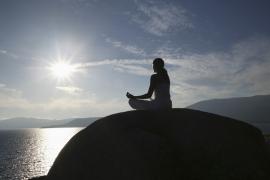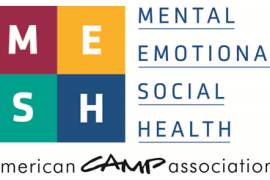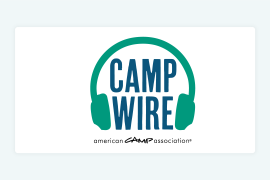As we shared recently, a lot of camps are redesigning buildings and other spaces for a changing climate. But there’s another driver of camp redesign that is less often talked about — but just as important — and that’s an effort to create spaces that better account for campers’ (and staff’s) mental, emotional, and social health (MESH) needs.
These changes are coming in part from a general recognition that MESH plays an important role in camper wellbeing and health, and in part they stem from a dramatic increase in the number of campers that are presenting with specific MESH needs.
Facilitating Professional Care
One clear example is the growing demand from campers (and their families) for facilitating ongoing MESH-related health care — for example sessions with therapists, psychologist or other healthcare providers. In response, many camps are creating “Zoom rooms” — designated private spaces where campers can attend virtual sessions with a therapist, or other mental health provider.
Yet while these spaces can help facilitate valuable and even vital support for both campers and staff, they also raise their own sets of challenges and questions on wide range of topics that include:
- Culture: Traditionally, many camps have deliberately emphasized temporarily disconnecting from social media and digital communication. Opening up the possibility of video-based communication means managing expectations about what that communication is — and is not — used for.
- Camper safety: The internet is inherently full of rabbit holes and risks. When camps provide opportunities for campers to access computers, in a private setting, they need to be able to manage what those computers are being used for.
- Policy: Quite aside from what websites campers are able to access, camps will also need to make sure that supervision policies can still be adhered to. For example, many camps are designing rooms to have transparency (e.g. through a glass door), so that campers can still be observed, but they can also be assured of a private conversation.
None of these challenges are insurmountable. Indeed, with careful forethought and intentional design, camps are successfully incorporating Zoom rooms in a way that not only maintains existing safeguards but also — through facilitating improved camper well-being — actually enhances an overall culture of safety.
For example, most camps that are incorporating Zoom rooms are placing strict and very clear parameters around their use that make it clear they are for prescribed and scheduled health care sessions, not simply calling parents "on demand" when a camper feels a little homesick. Similarly, camps are restricting what software is available on computers — installing Zoom-only devices that make it hard or even impossible to simply explore the internet. And they are designing the physical rooms to make sure that campers are always within eyesight (e.g. with glass doors), while also ensuring privacy in terms of not having private sessions overheard.
Creating Space to Decompress
But integrating MESH care into the camp environment isn’t simply about facilitating professional therapy sessions. It’s also about understanding that all of us have mental, social, and emotional health needs — whether or not we are currently diagnosed with a specific condition, or seeing a dedicated provider. So, in addition to Zoom rooms and other private spaces, many camps are also being intentional about incorporating quiet space — what some camps refer to as "zen dens." These are areas of the camp where anyone can go, if they are needing a break from the chaos and noise that is so often a part of the camp experience.
Here, the emphasis is on quiet and contemplation, not privacy. That means creating cozy, tactile environments with clear expectations of quiet and calm, but still fully within public view to allow for rigorous standards of supervision. Factors to consider when designing these spaces include:
- Location: Finding somewhere easily accessible and observable, but still away from the louder locations of camp.
- Atmosphere: Using dimmer lighting, calm colors, and soft furniture — bean bags, for example — camps are promoting environments that are conclusive to relaxation and decompressing from overstimulation.
- Activities: Fidget spinners, books, art supplies — there are many activities that can be offered to campers needing a little respite. But we can also offer "nothing" as a perfectly valid and important thing to do. (Sometimes campers just need a little nap after all.)
An Integrated Approach
It goes without saying that no environmental changes are going to improve MESH outcomes, without a corresponding focus on staff training and camper expectations. That said, no amount of staff training or communication around camper expectations can fully succeed unless there is an environment where MESH needs can be taken care of.
By carefully designing their environments to facilitate MESH care, camps are taking an important next step toward a safe, welcoming camp experience for all.
This blog is sponsored by The Redwoods Group — a mission-driven insurance carrier that only insures camps and other youth-serving organizations. Redwoods' model leverages data and insights from its insuring relationships to help customers scale their mission, protect their campers and create safe communities for all.
Photo credit: PeopleImages/iStock via Getty Images.
Periodically, the American Camp Association (ACA) makes timely and relevant information about products and services available to its members so they can make informed decisions for their camps. However, the ACA does not endorse products, services, or companies.
The views and opinions expressed by contributors are their own and do not necessarily reflect the views of the American Camp Association or ACA employees.




